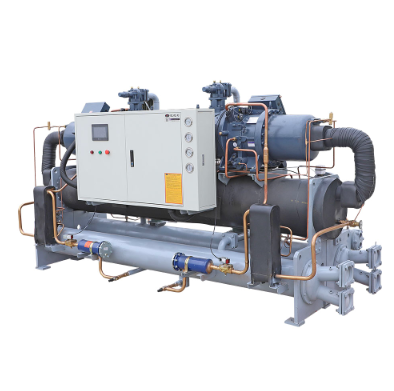We offer you 100% custom-made service Inquiry
One of the most used refrigeration equipment in the industry is a low-temperature chiller. Regular chillers cannot satisfy your refrigeration needs because the manufacturing of refrigeration in several industries has low-temperature requirements.
A low-temperature chiller that uses a tight screw compressed air, an effective heat absorber, a PLC microprocessor regulator, and a color touch screen has the advantages of being small, having a sensible layout, and being simple to use and maintain.
In this article, I will like to take you through the uses and maintenance of a low-temperature chiller.
The magnets-driven non-leakage valve having both high and low-temperature resistance lowers the danger of leakage, and the circulating syringe of a low-temperature chiller is suited for the excessive effect of quick endothermic and exothermic activity in a short time frame.
It also has several benefits, including low noise, high flow, long life, high flow rate, and low calorific value.
The compressor can function effectively at both high and low temperatures thanks to the separate self-cascading cooling system.
The temperature range of the electronic flow control valve is extensive. The electronic valve that is being used can precisely manage the rotary motor's number of steps, the activation of the electronic flow control valve, and the evacuation of the compressed air refrigerant.
Some equipment is fitted with a freezer foot pump to indicate the pressure of the refrigerator, and the condition of the compressor can be determined by that information.
Low-temperature chiller should be placed far from noisy areas.

The most crucial chores are cleaning and upkeep, regardless of the type of chiller.
Avoid letting the low-temperature chiller build up excessive dirt, which will reduce the engine's ability to function normally, by cleaning it consistently at least once every month.
All components of the low-temperature chiller should be cleaned after a prolonged period of inactivity.
For instance, it's essential to clean critical components like heat exchangers and compressors in addition to the faces of pipelines and filters. The chiller could be packed once all upkeep and cleaning are finished to keep dust along with other contaminants out of the chiller.
Before usage, the low-temperature chiller must go through equipment maintenance and troubleshooting.
You must first verify that the power supply is functioning normally and that the fuse's safety condition is sound. Before turning on the chiller, the operator must make sure that everything is in order, including the installation of all other chiller components.
After the chiller has been utilized, the equipment ought to be examined to see if there is any damage brought on by the operation of the equipment and to address it quickly.
In case you need a reliable manufacturer of low temperature chiller to work with, you can count on us for the best product at a price that wont break the bank.
Kindly click here for more information on our products or to pace an order.
By continuing to use the site you agree to our privacy policy Terms and Conditions.